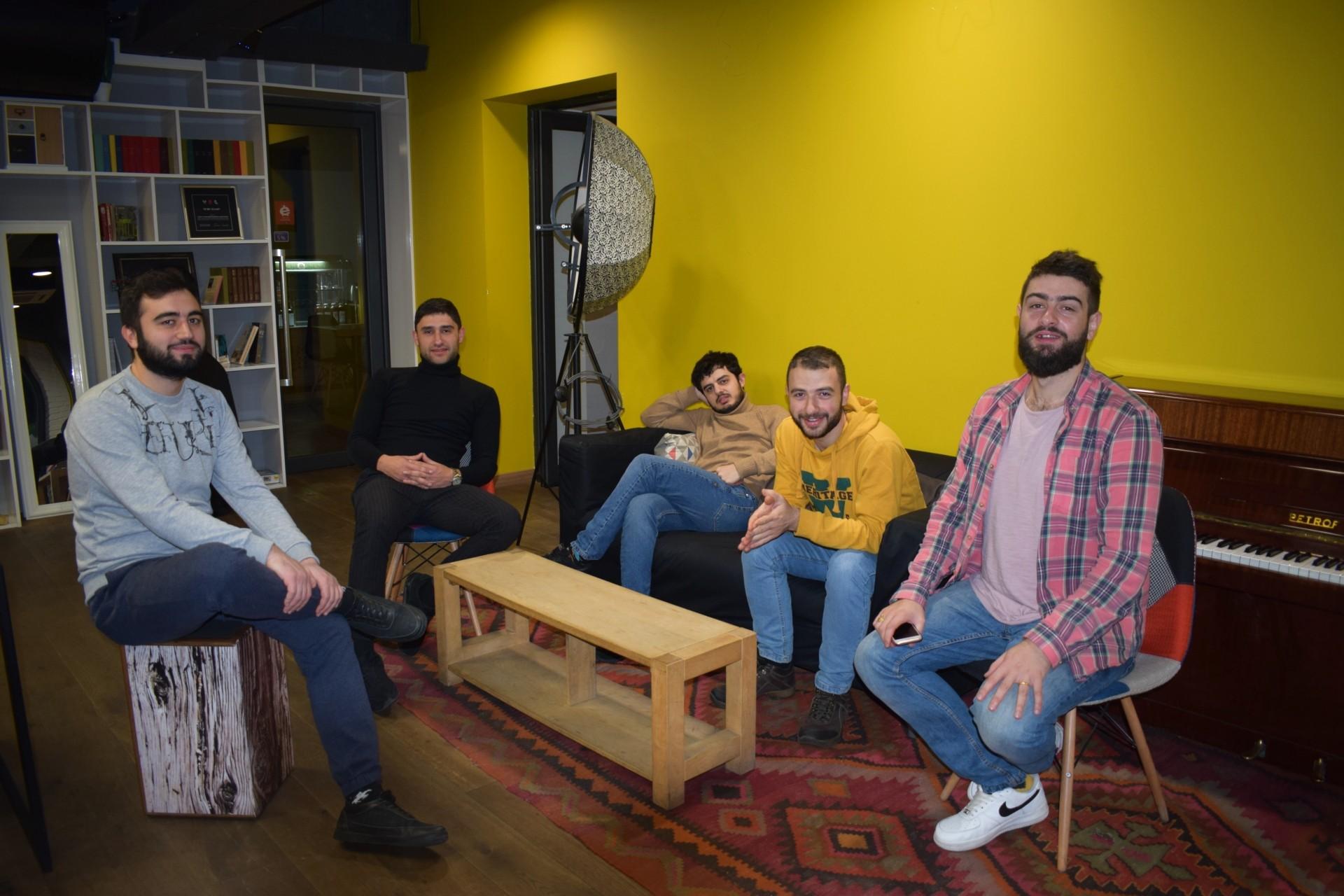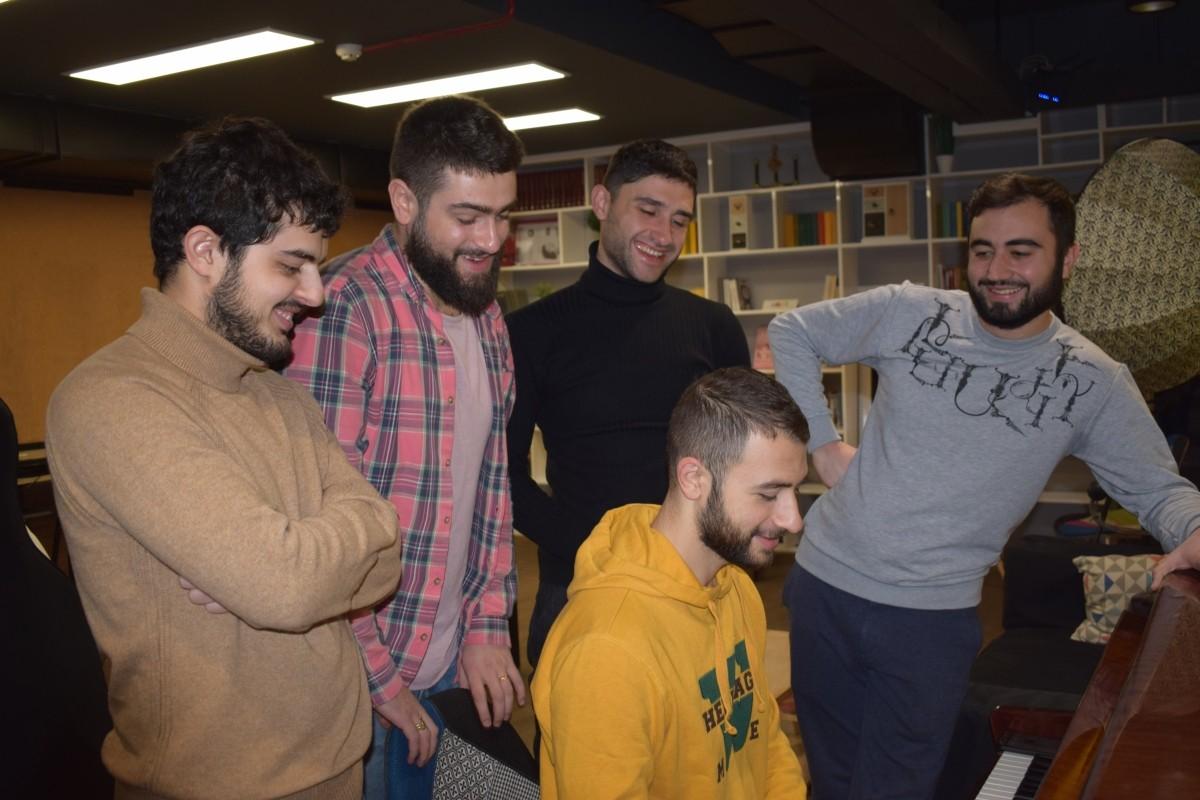
Back to the Roots: GOGHT Transforms Armenian Music
By Nvard Vicky Melkonyan
The lights go out, a short flash on the foggy stage and five young men appear. They have solemn and serious faces but their eyes flicker with excitement.
A momentary pause and each of them takes their place. A hush descends over the crowd.
Their choice of musical instruments is strange for many— the traditional Armenian duduk, tar, and dhol, along with a cello and a piano.
What kind of music can they play? One more pause, a deep breath, and a sweet melody fills the venue. It is calm and confident as the mighty mountains of the Armenian landscape. At the same time, it moves the listener to the core and brings forth images of their ancestors. They call themselves GOGHT.
These young men banded together in 2015 and have since been performing under the proud name of GOGHT, which derives from an historic Armenian region called “Goghtn.”
This region was famous for gusans—people who walked from place to place playing musical instruments, telling stories, and singing. In their work, members of the band perform traditional Armenian music under a new spotlight. Their main goal is to break stereotypes and misconceptions about Armenian music that the world or Armenians themselves might have.
Members of the band began their musical education at different ages, ranging from 5 to 12. Hayk Karapetyan, who plays traditional woodwind instruments shares his story.
“I used to play football as a child and loved it. My family moved and there were no football players where we lived. Switching from football to music was a tough moment because at the age of 12, being a football player seemed cooler.”
According to Stepan Ter-Ghevondyan, who plays percussion, when one becomes a musician one’s ancestral heritage plays an important role.
“Your land and its traditions attract you and you want to go back to your roots,” he said. In his opinion, everything starts with listening to music on the TV, as a child, because the TV is always on. “The truth is, though, that Armenian television does not provide people with truly Armenian music,” Stepan adds.
“Many nations promote their traditional music on a much larger scale than we can imagine,” Stepan said. “They have TV channels which play non-stop traditional music that people actually listen to. Meanwhile, a lot of Armenians do not know what traditional Armenian music really is.”
The musical influence for the band members started with classical music. Falling in love with the beautiful sounds of traditional musical instruments such as tar and duduk came later.
“We have parted from classical music, we didn’t want to meet the standards that everyone else did,” Hayk says.
Inevitably, he would meet many talented musicians who he admired, both older and younger than himself. Early on, he understood that classical music and its rules simply did not match his character.
“I decided that I was going to learn from all these people, but I am going to look inside myself to find the kind of music that I want to play, which comes from my heart,” he says.
Arman Peshtmaljyan, who plays the piano, notes that their music is not meant to be forced upon the masses.
“By no means do we say that everyone has to listen to only traditional music. But having a solid understanding of what our own music is and how it’s different from the rest of the world’s is definitely important.”
“The best part of this project,” according to Zareh Galstyan who plays the tar, “is that we have known each other from a very young age and are good friends.”
Some of the band members studied together at the Yerevan State Conservatory and have collaborated with each other on various projects.
For example, Arman and Hayk started a musical project called “Room 118” as students. They both remember when they used to work only on music and nothing else occupied their minds with great affection that time.
Anyone who has been to at least one of GOGHT’s concerts knows how the band works—their friendship and the warm feelings that derive from it are put into their music and performance.
Watching the members on the stage is pure joy as the listener not only enjoys the music but is also part of the excitement.
The music starts slowly and quietly. It gradually builds into a more intense melody as the musicians immerse deeper into it. The music, like good music should, takes the listener on a journey of the past, present, and future, tuning out the world around them.
In that moment nothing else exists except the Armenian inside each listener. The heartfelt melody is over before they know it and the audience is left mesmerized in their seats.
GOGHT is trying to make a change with their music.
“We know that the music we play is not accessible to all. If it was, it would have no value. And if we can transform two people out of 200 and help them understand our music and make them more informed about their own heritage, that’s all we can ask for,” Stepan says.
GOGHT is planning to have more concerts in 2019 in locations not yet explored by other musicians. They will give a concert on February 16 at the AGBU building in Yerevan.
Since the beginning of the year GOGHT has been working on a new CD. The band members hope that in coming years they will be able to impact a lot more people with their unique music and help alter misconceptions about traditional Armenian music. Their advice to other musicians who are doing the same is to keep working hard, go back to the roots, and convey beautiful ethnic music from the heart.
Vicky Melkonyan is an English and Communications major at the American University of Armenia in Yerevan
 Videos
Videos Photos
Photos

Write a comment